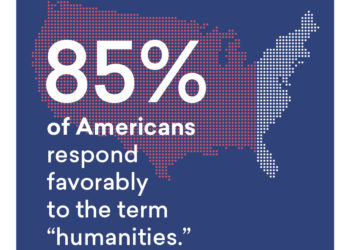Editor’s Note: Today’s post is by Elizabeth Demers, Kristen Twardowski, and Charles Watkinson. Elizabeth is Editorial Director; Kristen is Sales, Marketing, and Outreach Director; and Charles is the Director of the University of Michigan Press.
This week the University of Michigan Press announced through our partner LYRASIS that we have reached our target of converting 50% of our 2022 monograph program to open access, without ever requiring any author to pay to publish. We will increase this percentage to 75% in 2023 and anticipate being able to sustain a majority open access monograph program that produces at least 60 new books a year. These open-access titles are now available on our open-source publishing platform, Fulcrum, and through multiple other distribution channels.
To sustain our output, we have developed a financial model, Fund to Mission, that matches investments in our ebook collection from over 100 libraries with subventions for individual titles, and support from our parent institution. In July, the Press was honored to receive a multiyear, $1.2 million investment from the University of Michigan Provost’s Office and an invitation to apply for continuing funding within the next three years.
While we acknowledge the privilege of being at a leading and well-resourced US public university, we hope that the commitment Michigan’s academic leadership is making to open access for humanities books will be duplicated by Provosts at other North American institutions. As the name of our initiative suggests, such support allows university presses to pursue their core mission; to maximize global access to humanistic knowledge at a time when the need for rigorously vetted, boldly-expressed, high-quality information has never been greater. We also hope that even more libraries will be attracted to partner in achieving our shared mission.

The Road to Open Access Monographs at U-M Press
Who really benefits from the publication of humanities monographs? And who else could benefit if they were more digitally accessible? These are existential questions at U-M Press, where 80 of the 100 books we publish yearly are monographs, i.e., books written by scholars for scholars. Busily focused on our daily operations, such questions were also ones we hadn’t much considered until March 2020, when COVID-19 surged, and higher education paused.
Like many publishers, we responded to the shutdown by making our ebooks (the U-M Press Ebook Collection) freely accessible for six months. Like other university presses, we quickly discovered that increasingly paltry print sales of monographs had no correlation with the untapped global demand for their contents. We had become so used to recounting the weary tale of the “stressed humanities monograph” as brilliantly captured in this ACLS graphic that the global surge in use was invigorating. It turned out that the unkind caricature of monographs as “books that don’t sell” had little correlation with the value and use readers were finding in them. Our challenge then became clear: How could we convert temporary free access into permanent open access while still sustaining our operations?
In developing the Fund to Mission model, we committed from the beginning to the fundamental principle of equitable open access — that no author should ever be required to pay to publish. In learning how to avoid charging book processing charges (BPCs), we depended heavily on the insights of projects like LuminosOA, Knowledge Unlatched, COPIM, the Sustainable History Monograph Pilot, OPERAS, the Lever Initiative, the LYRASIS OACIP, the OA Books Toolkit, and The MIT Press’s Direct to Open initiative. We also benefited hugely from forums such as the Open Access Books Network and the Subscribe to Open Community of Practice, as well as focused 1:1 and group conversations with members of our Library Partner Group — not least our excellent colleagues at the University of Michigan Library and partners at LYRASIS.
The Fund to Mission model is founded on the principle that the stakeholders who benefit from the publication of humanities monographs should all contribute to the costs of producing them. We have identified three main stakeholder groups: (1) organizations invested in the success of individual authors and their works; (2) libraries invested in access to reading and the readers themselves; and (3) academic leaders who are committed to supporting research infrastructure. We discuss the benefits each group receives from monographs below.
Supporting the success of authors
Authors clearly benefit from monograph publishing. As Oxford and Cambridge University Press reported in their 2020 report on a large-scale survey of researchers which received over 5,000 submissions, “the resounding response was that monographs remain key to academic research, both from a career and an epistemological point of view.” From a career perspective, tenure considerations may be decreasingly important when three in five US faculty members are on contingent appointments, but an increasing number of our authors care about managing their public presences in an uncertain job market.
From an epistemological perspective, core to the authorship of long-form works is the process of “thinking through the book,” a memorable phrase used by Geoffrey Crossick in his foundational 2015 report on monograph publishing. By pairing authors with expert interlocutors (acquisitions editors, peer reviewers, series editors, faculty mentors from our Executive Committee, and expert production editors), the university press provides a rare space for focused reflection amidst the noise of teaching and administration – a virtual laboratory for humanists. Viewed as the equivalent of providing fully-staffed laboratory space, the average cost of $19,954 per monograph (as reported in a recent report from the Association of University Presses) no longer seems so expensive.
We’d never require individual authors to pay, but programs such as the Sustainable History Monograph Pilot and the NEH Fellowship Open Books Program bring investments from disciplinary advocates to support individual works, and an increasing number of our international authors can obtain national funding for open access book publishing (in the Netherlands, for example, and perhaps soon in the UK). We’re glad to accept these contributions when available. The laboratory metaphor also extends to the digital affordances the Press has been able to offer authors on the multimodal Fulcrum platform (developed with generous support from the Andrew W. Mellon Foundation) once their work becomes open access. These include open annotation, including linked data, interactive maps and 3D models, and industry-leading accessibility for readers with visual disabilities. In 2021 we received a PROSE Award for Best eProduct for an example of such work by University of Virginia professor A. D. Carson.
Expanding access for readers
Before 2020, we simply did not understand how many different kinds of readers could benefit from monograph publishing. This group includes individual users as well as those accessing books through a library network. Some individuals pay for the convenience of an affordable print book, even when an open-access version is available. (We don’t know much about these readers but look forward to learning more from the NEH-funded study of the impact of open access on print sales led by John Sherer and Erich van Rijn.)
More significant for the financial sustainability of our program are the visionary libraries that support Fund to Mission through our partnership with LYRASIS, where Sharla Lair has been a key architect of the program. There are over 100 of these investors so far, and more are joining every month. These libraries make collection-level access possible not only for their campus communities (who also gain access to the Michigan backlist of almost 2,000 restricted access books in a model comparable to the Direct to Open and the Opening the Future initiatives) but also for a global readership who could never previously have discovered or used our books.
The partnership between the university press and our library partners in Fund to Mission builds on libraries’ essential role as bridges to a diverse array of readers (through funding, access, and discovery). It rests on our shared purpose of ensuring broad and stable access to scholarly works. For libraries who are unable to contribute to our complete collection model, we partner with Knowledge Unlatched to create smaller subject collections — we’re especially proud of the U-M Press Peace and Justice 2023 KU Opportunities program. Meanwhile, we are refining our program by learning about reader experiences through a Books Analytics Dashboard developed at Curtin University (in due course to be fed by data from the OA Book Usage Data Trust), Google Analytics, and a pilot OA Analytics metrics tool developed by PSI.
While usage numbers are persuasive, especially when visualized through maps and “top ten” lists, there is no substitute to hearing from real individuals about why open-access books matter to them. We have aggregated over 5,000 responses from individuals who used our open access books on the Fulcrum platform, and their responses have helped shape the development of our program. For example, we have invested in a more robust infrastructure for serving international readers after discovering our titles’ popularity in Turkey and India. And we have doubled-down on delivering fully accessible EPUB3 titles when we found out how many of our users relied on screen readers. Our commitment to accessibility included working to become the first university press with a Benetech Global Certified Accessible workflow.
Reinforcing research infrastructure
For Provosts and Academic Deans, supporting the infrastructure of research is a core responsibility, and an increasing number of these leaders recognize that the network of university presses provides an underlay for the humanities at a much lower cost than equivalent multi-institutional science infrastructure. Some administrations support monograph publishing via grants to authors. For example, within the TOME program a significant percentage of funding comes not from libraries but from Provosts, Research Offices, and Humanities Deans. That is certainly true at the University of Michigan.
Where a university press exists within the university, administrators have a particularly unique opportunity to support core humanities infrastructure. The commitment of the U-M Provost’s Office came with the clarification that “ensuring a sustainable future for high-quality scholarly publishing cannot just be the responsibility of strained library budgets. We all benefit from the shared infrastructure that university presses represent and should all be willing to contribute.”
The Provost’s addition of $400,000 a year to an existing commitment of $600,000 represents a substantial investment in University of Michigan Press. However, when seen in the context of other investments the university makes, the numbers are not so startling. As economist Paul Courant, a previous Provost at the University of Michigan, has written: “A million dollars a year to sustain a press may seem like a lot of money to a big research university. A million dollars a year to support the publication of faculty work in the humanities is a drop in the bucket relative to the total expenditure on humanities faculty in that same university.” As Karin Wulf has eloquently explored in The Scholarly Kitchen, university press publishing is just part of the complex humanities research infrastructure that academic leadership needs to attend to, but the return on investment for investing in one’s university press is substantial.
Where do we go from here?
None of us know what the future of support for the humanities monograph will bring, especially in the larger and rapidly evolving landscape of open access. But at the University of Michigan Press, we have emerged from our cocoon of self-reflection with more clarity. We believe that publishing high-quality open-access humanities monographs facilitated by expert publishing professionals is not only essential but sustainable. If the stakeholders who benefit contribute their share, there is no reason why the humanities literature should wither behind a paywall while the sciences go open.
At the same time, it is clear that our ability to sustain the Fund to Mission model is highly dependent: Will authors have the space in their own lives to be able to create the long form-works that readers so clearly value when other human components of humanities infrastructure are under such stress? Will the participation benefit we can offer libraries (access to the backfile and remaining restricted access titles) be enough for visionary librarians to defend their altruistic commitment to pay for an increasingly open global frontlist, especially in the face of declining resources and competing demands (not least from other open access programs)? And can Provosts and Academic Deans increase support for their own university presses in the way our leaders at Michigan, essential since the university press network can only thrive if multiple constituent nodes are healthy?
There is no one-size-fits-all for monograph publishing. The sustainability strategies will continue to be as diverse as the long-tail world of academic book publishing itself. But through every model that shares its experience, we can understand more about where the gaps are and what approach can work in which situation. At the University of Michigan Press, we have learned from the last two years that open access is no longer an offshoot of scholarly publishing; it is rapidly becoming the default model for advancing research in both the humanities and the sciences. If the only certainty is change, then we hope the University of Michigan Fund to Mission initiative contributes to this trend in a meaningful and sustainable way.


